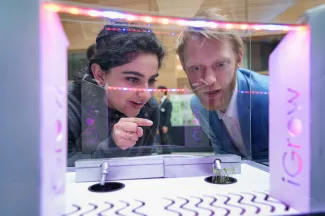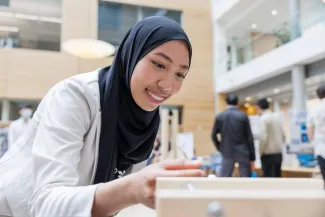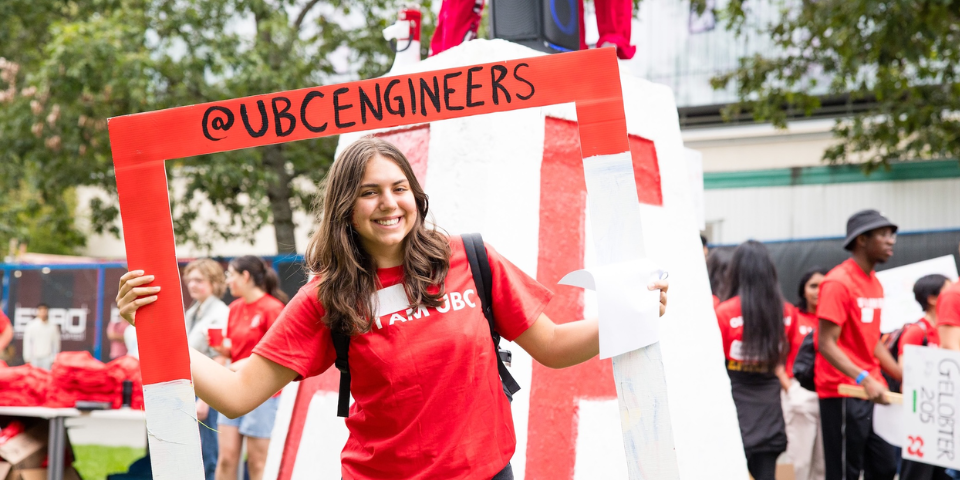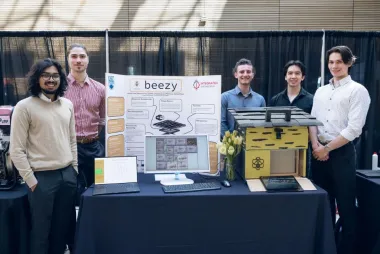Felipe Diaz Vargas, Triss Evans, Clara Lo, Stephanie Wilkinson, Trevor Wong, Teresa Wu
- Degree:
- Bachelor of Applied Science
- Program:
- Campus: Vancouver
Our project
Our delivered product was a prototype that is capable of autonomously navigating to multiple locations on a body of water and taking a variety of water quality readings at different depths. This technology improves safety by removing the need for workers to be out on the water and reduces cost by greatly decreasing the time and number of personnel required to conduct tests.
Our inspiration
When coming up with project ideas, our group discovered that the mining industry currently spends a significant portion of its resources on water testing in tailing ponds. Workers have to manually collect water samples in the deepest parts of the ponds, and the process has led to injury. Therefore, our goal was to build an automated water quality testing boat that would increase worker safety and help companies optimize their resources. We worked with companies in the BC mining industry, as well as contacts within UBC, to tailor our project to match real-world needs.
The most interesting/surprising thing we learned
We believe the most surprising thing the team learned on the project was the nature of water testing on tailings ponds. Our initial design was to take samples at different locations on the surface of a pond, but after research and consultation, we learned that there was significant stratification of minerals and other parameters of interest through the water.
Our biggest challenge
We had to switch gears and change a significant portion of our design to allow for testing at various depths, which presented a real challenge.
What excited us most
Our boat required lots of testing; the process of trial and error was frustrating yet rewarding. Whether it was patching holes in the hulls and checking for leakage or adjusting the size of propellers for efficiency, all subsystems required iteration. That being said, it was exciting to see different components of the project come together, especially the moment when we saw it float and move for the first time.
Our project’s future
Our project received significant interest at Applied Science Design and Innovation Day, and the team has lots of ideas for how we could improve our design. Some of the improvements we have brainstormed include mounting cameras and a depth sounder to the boat and running software that could map the bottom of ponds and perform tasks like intelligent object avoidance.






